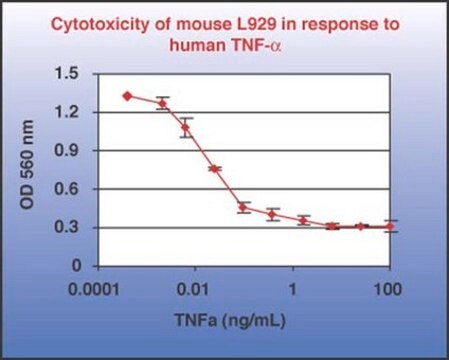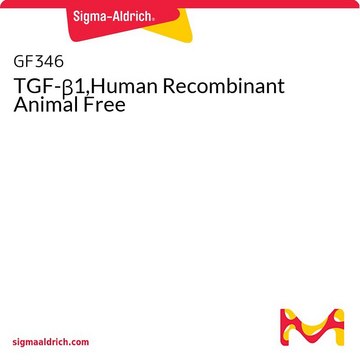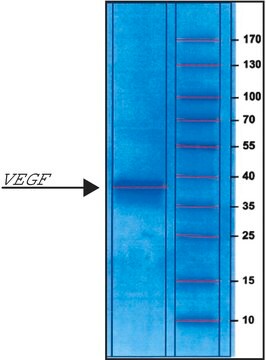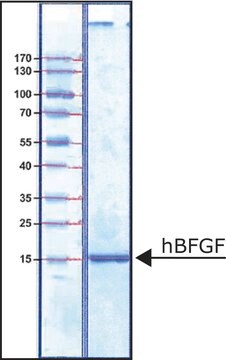Wichtige Dokumente
T7924
Transforming Growth Factor-α human
≥98% (SDS-PAGE and HPLC), recombinant, expressed in E. coli, powder, suitable for cell culture
Synonym(e):
hTGF-α, TGF-α
About This Item
Empfohlene Produkte
Produktbezeichnung
Transforming Growth Factor-α human, TGF-α, recombinant, expressed in E. coli, powder, suitable for cell culture
Biologische Quelle
human
Qualitätsniveau
Rekombinant
expressed in E. coli
Assay
≥98% (SDS-PAGE and HPLC)
Form
powder
Wirksamkeit
≤0.2 ng/mL ED50
Qualität
endotoxin tested
Mol-Gew.
5.5 kDa
Verpackung
pkg of 1 mg
pkg of 5 mg
Lagerbedingungen
avoid repeated freeze/thaw cycles
Methode(n)
cell culture | mammalian: suitable
Verunreinigungen
≤1 EU/μg
UniProt-Hinterlegungsnummer
Lagertemp.
−20°C
Angaben zum Gen
human ... TGFA(7039)
Suchen Sie nach ähnlichen Produkten? Aufrufen Leitfaden zum Produktvergleich
Amino Acid Sequence
Allgemeine Beschreibung
Anwendung
- to determine the ideal concentration of growth factors to be used in the culture medium that supports sheep preantral follicles
- in human hepatocytes cell culture and keratinocyte cell culture
- to induce morphogenesis in primary mouse organoids
Biochem./physiol. Wirkung
Physikalische Form
Hinweis zur Analyse
Lagerklassenschlüssel
11 - Combustible Solids
WGK
WGK 3
Flammpunkt (°F)
Not applicable
Flammpunkt (°C)
Not applicable
Persönliche Schutzausrüstung
Eyeshields, Gloves, type N95 (US)
Hier finden Sie alle aktuellen Versionen:
Besitzen Sie dieses Produkt bereits?
In der Dokumentenbibliothek finden Sie die Dokumentation zu den Produkten, die Sie kürzlich erworben haben.
Kunden haben sich ebenfalls angesehen
Unser Team von Wissenschaftlern verfügt über Erfahrung in allen Forschungsbereichen einschließlich Life Science, Materialwissenschaften, chemischer Synthese, Chromatographie, Analytik und vielen mehr..
Setzen Sie sich mit dem technischen Dienst in Verbindung.











